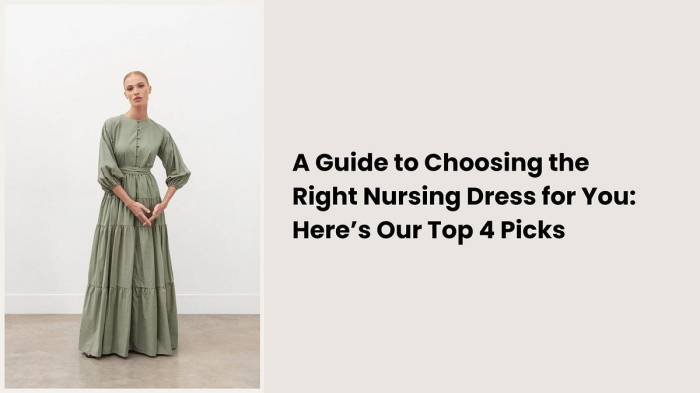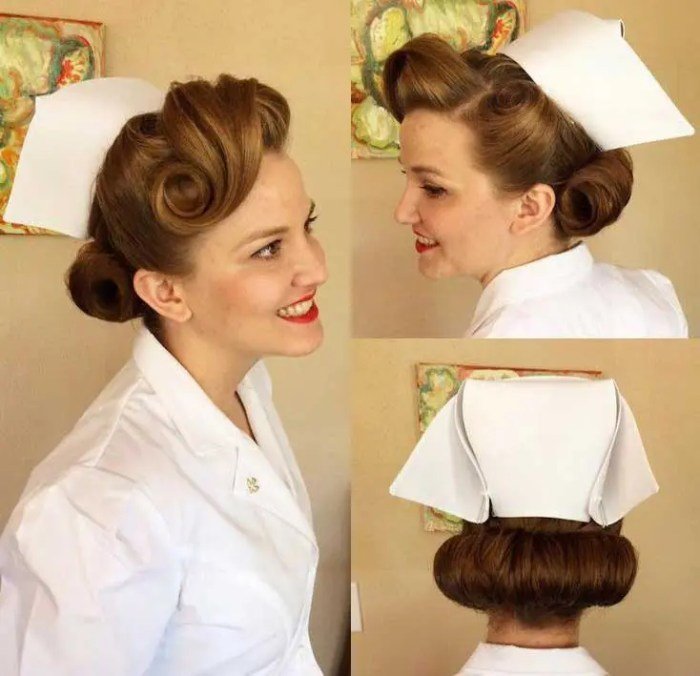Why did nurses stop wearing dresses? This intriguing question takes us on a captivating journey through the evolution of nurses’ uniforms, revealing the interplay between social norms, practical considerations, and the quest for professionalism and equality in the medical field.
From the prim and proper Victorian era to the transformative 20th century, nurses’ attire has undergone a remarkable transformation, mirroring the changing roles and responsibilities of these dedicated healthcare professionals.
Historical Context

The evolution of nurses’ uniforms from the Victorian era to the 20th century reflects the changing social and cultural norms surrounding nursing as a profession. In the early days of nursing, nurses were often seen as little more than domestic servants, and their uniforms reflected this low status.
In the Victorian era, nurses typically wore long, dark dresses with white aprons. These uniforms were designed to be modest and practical, and they helped to create a professional image for nurses. However, they were also often uncomfortable and restrictive.
As the role of nurses evolved and modernized, the traditional dress uniform became less practical. In its place, a more functional and comfortable uniform emerged. However, for special occasions such as fall weddings, fall wedding bridesmaid dresses purple offer a stylish and elegant option.
While nurses may no longer wear dresses as part of their daily attire, the legacy of their former uniform lives on in the formal wear choices of today.
Early 20th Century
In the early 20th century, nurses began to adopt more modern uniforms. These uniforms were typically made of white cotton or linen, and they were designed to be more comfortable and functional. They also featured shorter skirts and sleeves, which allowed nurses to move more freely.
World War I, Why did nurses stop wearing dresses
During World War I, nurses played a vital role in caring for wounded soldiers. They often worked in difficult and dangerous conditions, and their uniforms needed to be able to withstand the rigors of war.
As a result, nurses’ uniforms became more practical and durable. They also began to wear pants, which allowed them to move more easily and comfortably.
In the early 1900s, nurses transitioned from wearing dresses to more practical uniforms. However, the allure of stylish attire remains, as evidenced by the popularity of cocktail party Zara dresses. While nurses may no longer don dresses on the job, the desire for feminine and sophisticated clothing endures.
Post-World War I
After World War I, nurses continued to wear more modern uniforms. These uniforms were designed to be both professional and comfortable, and they reflected the changing role of nurses in society.
Today, nurses wear a variety of uniforms, depending on their work environment and personal preferences. However, the basic design of the nurse’s uniform has remained largely unchanged since the early 20th century.
Practical Considerations

As nursing evolved and medical practices became more complex, the practicality of nurses’ attire came into question. Dresses, while traditional and symbolic, presented certain challenges that hindered nurses’ ability to perform their duties effectively.
Hygiene and Infection Control:Dresses, especially those made of heavy fabrics like cotton or wool, were difficult to clean and sterilize. In the early 20th century, as the understanding of infection control improved, it became clear that dresses could harbor bacteria and spread infections.
Nurses needed attire that could be easily laundered and disinfected to prevent the spread of disease.
In the past, nurses commonly wore dresses as part of their uniforms. However, over time, this practice has declined. Various reasons have been cited for this change, including the need for more functional and comfortable attire. Today, nurses often wear scrubs or other practical clothing that allows them to perform their duties more effectively.
While the traditional nurse’s dress may have faded from view in many settings, the most beautiful pakistani dresses continue to be celebrated for their elegance and cultural significance.
Mobility and Safety
Dresses also restricted nurses’ mobility. They were often long and cumbersome, making it difficult to move quickly and easily around patients. In emergency situations or when performing certain medical procedures, nurses needed clothing that allowed for greater freedom of movement.
Furthermore, dresses could pose safety hazards. Long skirts could get caught in equipment or trip nurses, increasing the risk of accidents. In operating rooms and other sterile environments, dresses could shed lint or fibers that could contaminate the surgical field.
Technological Advancements:The introduction of new medical technologies and equipment also influenced nurses’ attire. As medical devices became more sophisticated, nurses needed clothing that allowed them to operate and maneuver them comfortably. Dresses, with their limited range of motion, could hinder nurses’ ability to use these technologies effectively.
Professionalism and Identity

The shift away from dresses had a profound impact on the perception of nurses as professionals. In the early days of nursing, nurses were often seen as subservient to doctors and other healthcare professionals. They were expected to wear dresses that were modest and covered their bodies, which reinforced this perception of subservience.
As nurses began to take on more responsibilities and become more independent, they began to demand more respect and recognition. They started to wear uniforms that were more professional and less revealing, which helped to change the way they were perceived by others.
Today, nurses are seen as highly skilled and respected professionals, and their uniforms reflect this change in status.
Uniforms and Unity
Uniforms play an important role in establishing a sense of unity and identity among nurses. When nurses wear the same uniform, it shows that they are part of a team and that they are working together to provide the best possible care for their patients.
Uniforms also help to create a sense of professionalism and trust, which is essential for nurses who are working with patients and families.
Modern Nurse Uniforms
Modern nurse uniforms reflect the changing roles and responsibilities of nurses. Today, nurses are more likely to be involved in patient care than ever before, and their uniforms need to be able to accommodate this. Many modern nurse uniforms are made from durable, easy-to-care-for fabrics that can withstand the rigors of a busy hospital environment.
They also often feature pockets and other features that make it easy for nurses to carry the equipment they need.
Gender and Equality: Why Did Nurses Stop Wearing Dresses

The shift away from dresses in nurses’ uniforms has significant implications for gender equality in the workplace. Traditionally, dresses were seen as a symbol of femininity and subservience, reinforcing the perception of nurses as subservient to physicians.
By removing dresses from their uniforms, nurses challenged these stereotypes and asserted their professional autonomy. Modern nurse uniforms, which typically consist of pants or scrubs, promote inclusivity and gender neutrality, allowing nurses of all genders to feel comfortable and respected in their work environment.
Nurses once wore dresses as their uniforms, but this practice has since changed due to the need for more practical and functional attire. However, dresses remain popular for special occasions, such as weddings and proms. If you’re looking for a stylish and elegant dress for a young bridesmaid, consider revelry junior bridesmaid dresses.
These dresses are available in a variety of colors and styles, so you’re sure to find the perfect one for your special day. Even though nurses no longer wear dresses as their uniforms, they continue to be a popular choice for formal events.
Inclusivity and Gender Neutrality
- Modern nurse uniforms are designed to be functional and comfortable, regardless of gender.
- Pants and scrubs provide greater freedom of movement and flexibility, enabling nurses to perform their duties effectively.
- Gender-neutral uniforms break down traditional gender barriers and create a more inclusive work environment.
Current Trends and Innovations
The nursing profession is constantly evolving, and so are the uniforms that nurses wear. In recent years, there have been a number of new trends and innovations in nurses’ uniforms, driven by a desire for greater comfort, functionality, and style.
One of the most significant trends in nurses’ uniforms is the use of antimicrobial fabrics. These fabrics are designed to inhibit the growth of bacteria and other microorganisms, which can help to reduce the risk of infection. Antimicrobial fabrics are often used in scrubs, gowns, and other garments that come into contact with patients.
Another trend in nurses’ uniforms is the use of moisture-wicking materials. These materials help to keep nurses cool and dry, even when they are working in hot or humid environments. Moisture-wicking materials are often used in athletic wear, and they are becoming increasingly popular in nurses’ uniforms as well.
Technology is also playing a role in the development of more functional and comfortable nurses’ uniforms. For example, some uniforms now incorporate sensors that can track the wearer’s vital signs. This information can be used to help nurses monitor their own health and well-being, and it can also be used to provide early warning of potential health problems.
Finally, nurses are increasingly using uniforms to express their individuality and creativity. Many nurses now choose to wear scrubs or other garments in bright colors or patterns. Some nurses also choose to accessorize their uniforms with jewelry or other personal items.
Examples of Innovation
- Scrubs made with antimicrobial fabrics to help prevent the spread of infection.
- Gowns made with moisture-wicking materials to help keep nurses cool and dry.
- Uniforms with built-in sensors to track the wearer’s vital signs.
- Scrubs and other garments in a variety of colors and patterns to allow nurses to express their individuality.
Related Topics: Women’s Fashion

Women’s fashion has evolved throughout history, with dresses serving as a central element. Dresses come in a wide variety of styles and designs, each with its unique characteristics.
Here is a table showcasing different types of women’s dresses:
| Name | Description | Example | Image |
|---|---|---|---|
| Ball gown | A floor-length, formal dress typically worn to balls and other special occasions. It is often made of luxurious fabrics such as silk or satin and may feature intricate beading or embroidery. | Cinderella’s dress | [Image of Cinderella’s ball gown] |
| Sundress | A casual, lightweight dress designed for warm weather. It is often made of cotton or linen and may feature a simple design with straps or a halter top. | A floral sundress | [Image of a floral sundress] |
| Shift dress | A simple, straight-cut dress that falls just below the knees. It is often made of jersey or other stretchy fabrics and may feature a variety of necklines and sleeve lengths. | A black shift dress | [Image of a black shift dress] |
| Wrap dress | A dress that wraps around the body and ties at the waist. It is often made of a lightweight fabric such as silk or chiffon and may feature a variety of prints or colors. | Diane von Furstenberg’s wrap dress | [Image of Diane von Furstenberg’s wrap dress] |
| Maxi dress | A long, flowing dress that reaches the ankles or below. It is often made of a lightweight fabric such as cotton or rayon and may feature a variety of prints or colors. | A floral maxi dress | [Image of a floral maxi dress] |
Summary
The shift away from dresses in nurses’ uniforms has been a multifaceted one, driven by practical concerns, professional aspirations, and societal shifts. Modern nurse uniforms reflect the evolving nature of nursing, embracing functionality, comfort, and inclusivity while honoring the legacy of these compassionate caregivers.
Key Questions Answered
Why did nurses traditionally wear dresses?
In the Victorian era, dresses were the standard attire for women in many professions, including nursing. They were considered modest, practical, and easy to clean.
When did nurses start wearing scrubs?
Scrubs became popular among nurses in the 1960s and 1970s. They were initially designed for surgeons but were quickly adopted by nurses due to their comfort, functionality, and ease of maintenance.
Are there still nurses who wear dresses?
While scrubs are the most common type of uniform for nurses today, some nurses still choose to wear dresses or skirts. This is particularly common in certain specialties, such as pediatrics or oncology, where a more traditional appearance may be preferred.